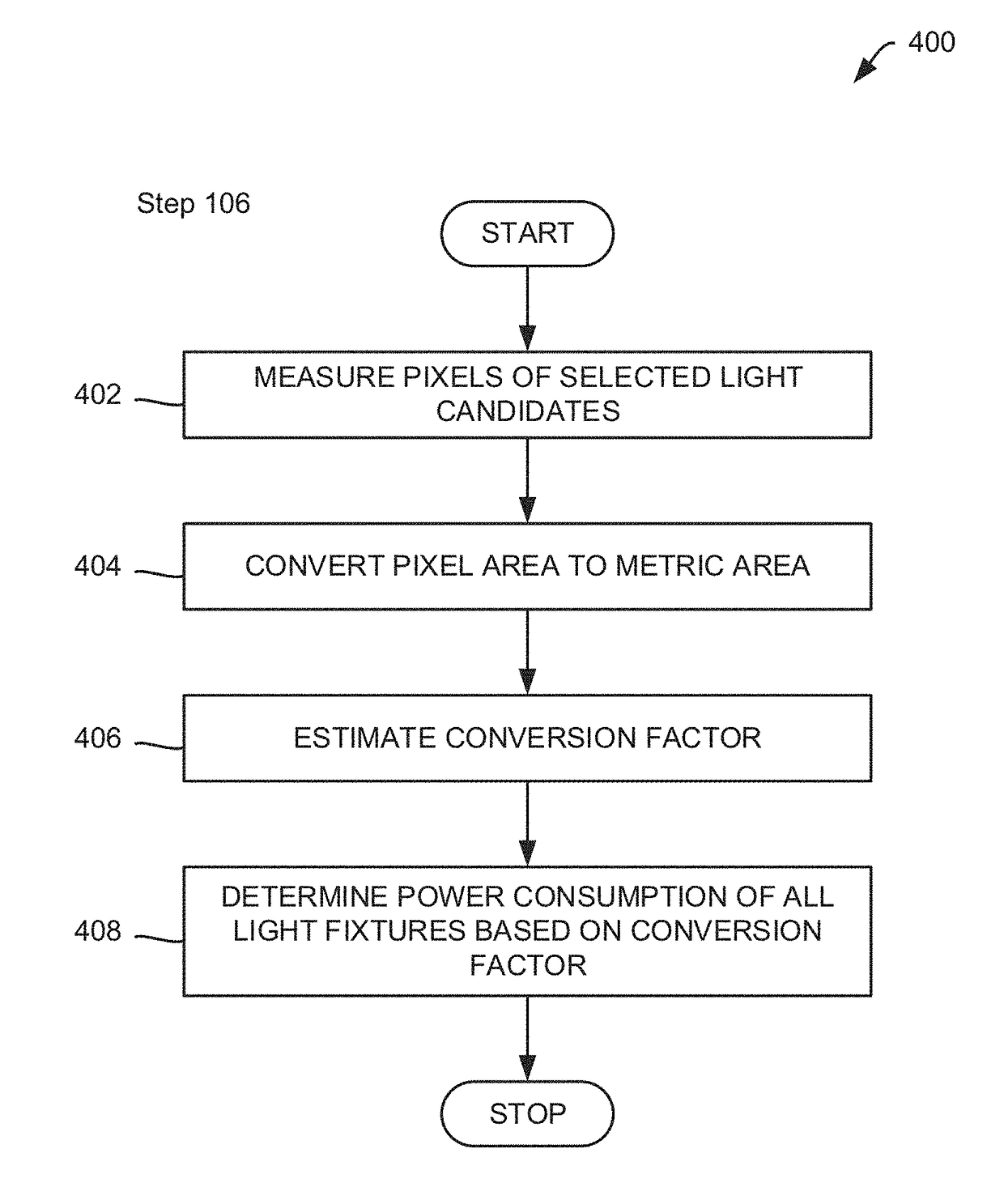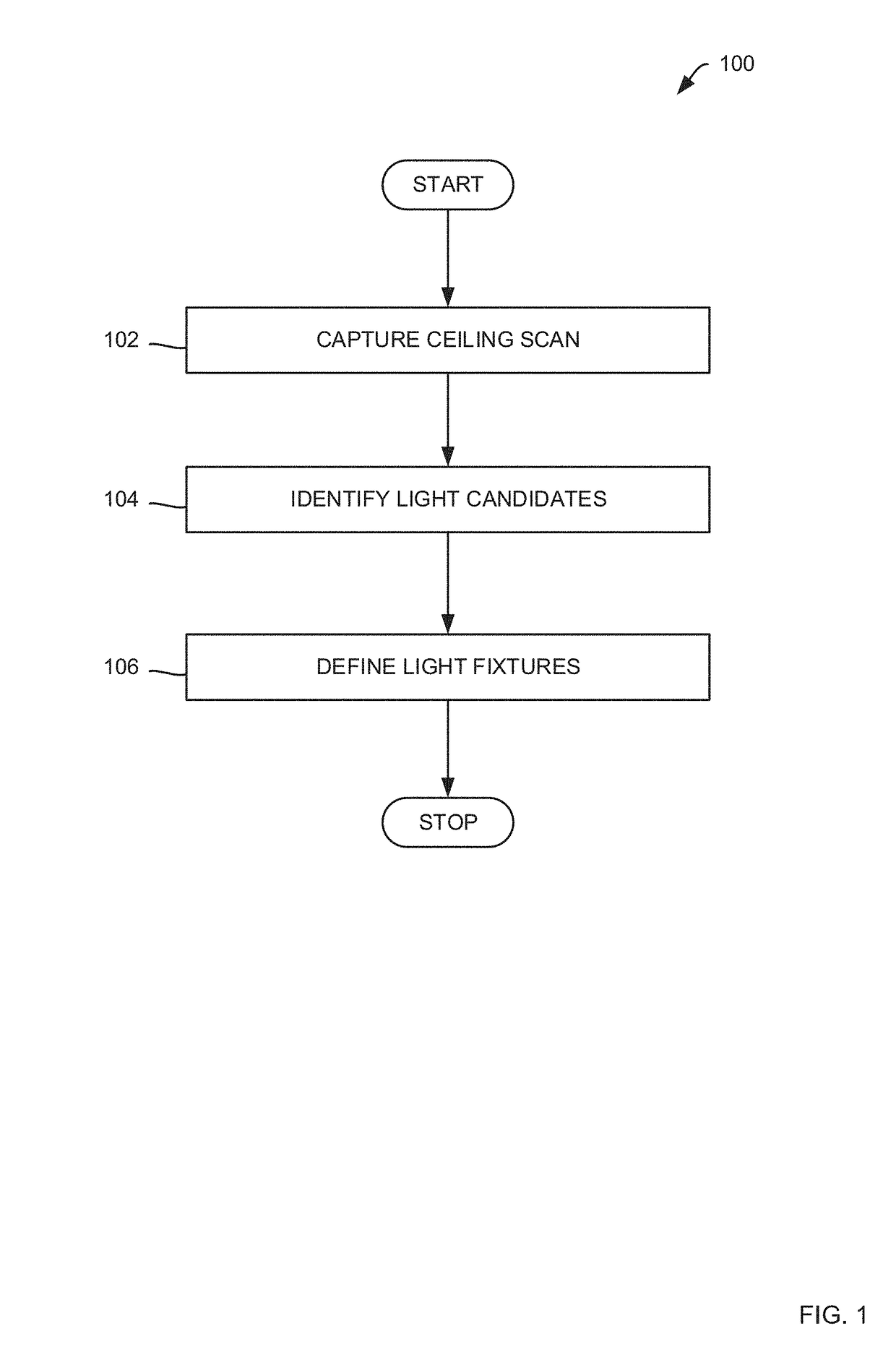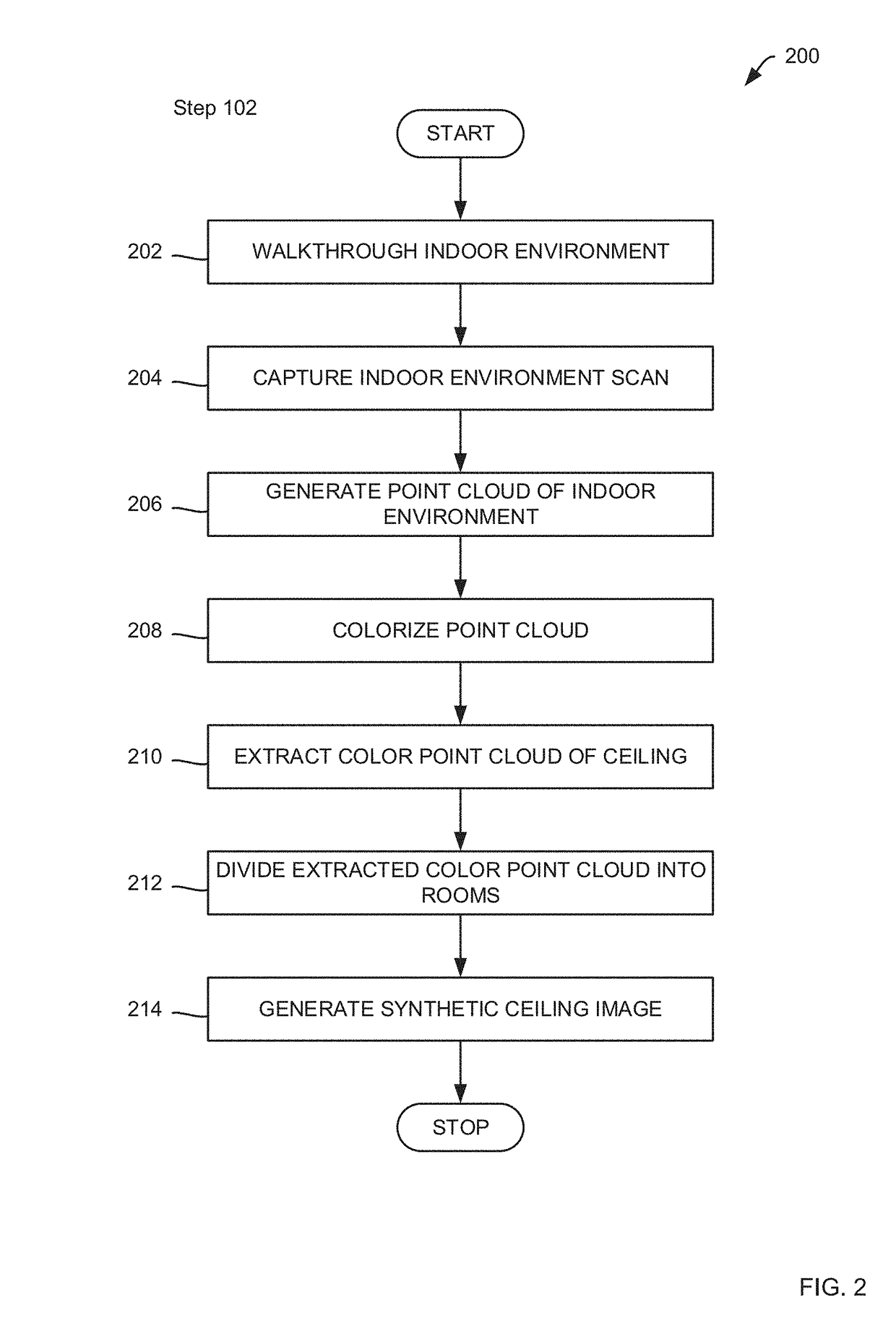Methods for detecting luminary fixtures
a technology for luminary fixtures and methods, applied in the field of methods for detecting luminary fixtures, can solve the problems of laborious, laborious, tiring, error-prone and inaccurate, and the electricity consumption of today's commercial buildings is du
- Summary
- Abstract
- Description
- Claims
- Application Information
AI Technical Summary
Benefits of technology
Problems solved by technology
Method used
Image
Examples
example conversion
[0033 Factor
[0034]The following represents an example of determining a conversion factor in accordance with embodiments provided herein:
[0035]Determining a conversion factor begins by selecting candidate luminary regions for which it is easy to estimate the actual power. For example, standard florescent luminaries that are 48 inches long, consume 28 watts, while those that are 24 inches long consume 14 watts. The following list depicts few standard T5 luminaries with different lengths and different power consumptions:[0036]2 feet 14 Watts[0037]3 feet 21 Watts[0038]4 feet 28 Watts
[0039]Suppose that in a synthetic ceiling image, 48 inch long rectangular looking light blobs (as described in a step 308, FIG. 3) corresponding to luminary candidates are identified. In accordance with known values, 28 watts may be assigned to those light blobs. By repeating this process, a table of the luminary candidates for which we know the area and power may be generated. Below is an example of nine ca...
PUM
 Login to View More
Login to View More Abstract
Description
Claims
Application Information
 Login to View More
Login to View More - R&D
- Intellectual Property
- Life Sciences
- Materials
- Tech Scout
- Unparalleled Data Quality
- Higher Quality Content
- 60% Fewer Hallucinations
Browse by: Latest US Patents, China's latest patents, Technical Efficacy Thesaurus, Application Domain, Technology Topic, Popular Technical Reports.
© 2025 PatSnap. All rights reserved.Legal|Privacy policy|Modern Slavery Act Transparency Statement|Sitemap|About US| Contact US: help@patsnap.com



